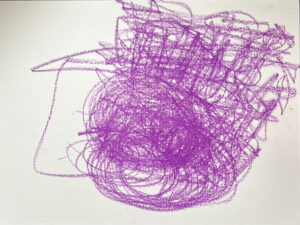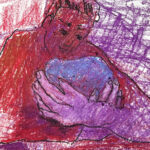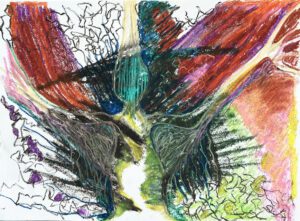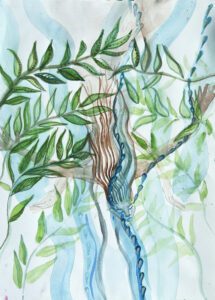Rebecca—who is back East because of a complicated dental implant that isn’t healing well—was bemoaning to her husband KC that she felt overwhelmed and couldn’t think straight. She’s been surfing between her mother and her sister’s couches and torn between wanting to spend time with them and wanting to be home with KC and the cats.
Stressed Out
What’s distressed her more is she has to write a chapter for a book whose deadline is looming but the tooth pain is making it hard for her to formulate her thoughts. So instead of doing that, she’s helping other people with their writing projects but her procrastination, however justified, is quietly gnawing away at her.
Pushing Through But Not Successfully
In the midst of this she’s not doing any of the hobbies she enjoys—painting, making music mixes, going to thrift stores with her sister—she’s just slogging through menial tasks to get the mental clutter out of the way so supposedly she can finally relax! All the while she’s been berating herself for complaining about these “high-quality problems” knowing there is so much legitimate suffering in the world.
Stress Needs a Home
After Rebecca vented all of this anxiety to KC, he said simply “stress wants a home to live in.” This stopped Rebecca in her tracks. She didn’t even know what he really meant by it, but it seemed just right.
Expressing the Stress
Rebecca realized that in order to manage her angst, she should be taking some of her own medicine and thought, in particular, of a technique she’s been using with clients/friends to express and transform stress:
The Bilateral Scribble Technique**

- Find a piece of paper, preferable 9 x 12 or larger and thick enough to handle some pressure.
- Find any drawing instrument like a pencil, marker, or oil or chalk pastel—something that you can also use with pressure (paints are probably not as good for this technique unless you are working on a large surface with large heavier paintbrushes).
- Shut your eyes and, using your non-dominant hand, make scribble marks until the movement of your hand is relatively smooth (at least a minute but could be more).
- Notice how it feels to be using your non-dominant hand both physically and emotionally–is it awkward and stiff or a relief and liberating?
- Then switch to your dominant hand for about the same amount of time and again notice what that feels like.
- You can switch back and forth a couple of times, keeping your eyes closed. Each time notice how it feels to be shifting from one to the other.
- Now open your eyes and find an image or a design in the scribble. You can rotate the paper to see if something emerges from other angles.
- Develop that image by adding color, building the shapes, etc.
- In developing the image, you can stick with the original scribble or you can start fresh on another piece of paper or really any art media—clay, collage, painting—to create another version of the image you see.
- Spend at least 3-10 minutes doing this (or as long as you want, the longer the better).

Stress Found A Home
After Rebecca had gone through this process and looked at what she’d made, she was initially embarrassed by the intensity of the color. But after showing it to her friend Annu, who instantly saw the tenderness of a figure holding a small creature, Rebecca could see with some humor that she’d unwittingly created a “home for her stress” in the arms of this nurturing presence. Even if her stress wasn’t completely gone, at least it was being lovingly tended to. KC jokingly called it “Holding her Stress Bean” which sounded to Rebecca like “Stress Being” and again seemed just right.
Shifting Out of the Default Mode
At the end of this, Rebecca felt some relief from her agitation–the pitch did not feel as high. This is the point. When we are overwhelmed, instead of trying to think our way out of it and pushing ourselves to “get over it!”, we need to first dive in to and express the stress. By using techniques like bilateral movement, art, combining the two, etc., we shift the mind out of its default mode so that the stress gets not only expressed but also transmuted into something else.
Other Non-Dominant Hand Scribbles


Here is another example this technique by Annu, mentioned above, that we featured a few months ago (click here to see that blog post). After making a series of scribbles, Annu added layers and layers of oil pastel and then used a pen cap to scrape into the thick pastel the outline of a figure with widespread arms and hair flowing upward.
She then made a new piece altogether out of watercolors. You can really see the difference in the intensity of feeling (and the quality of feeling) between the two. You can also see that, like Rebecca’s image, what she chose to focus on and what it communicates speaks to the shift from stress to something else. We may not be able to name that “something else” but when we see it, we can tell that something changed.
* * This is adapted from Florence Cane’s bilateral exercises, Donald Winnicott’s scribble technique and Lucia Capacchione’s journaling technique from “The Power of the Other Hand” (1988).
